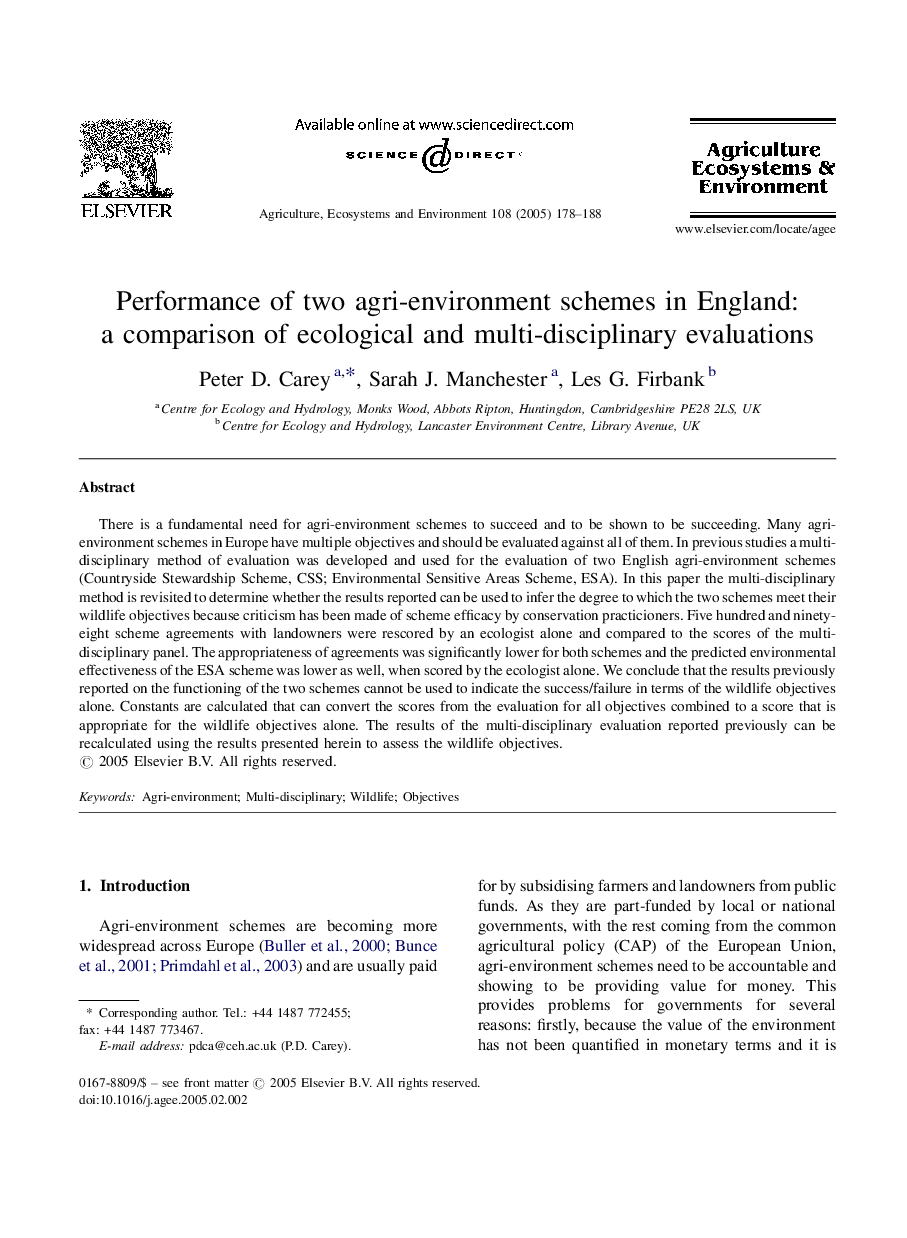| Article ID | Journal | Published Year | Pages | File Type |
|---|---|---|---|---|
| 8970841 | Agriculture, Ecosystems & Environment | 2005 | 11 Pages |
Abstract
There is a fundamental need for agri-environment schemes to succeed and to be shown to be succeeding. Many agri-environment schemes in Europe have multiple objectives and should be evaluated against all of them. In previous studies a multi-disciplinary method of evaluation was developed and used for the evaluation of two English agri-environment schemes (Countryside Stewardship Scheme, CSS; Environmental Sensitive Areas Scheme, ESA). In this paper the multi-disciplinary method is revisited to determine whether the results reported can be used to infer the degree to which the two schemes meet their wildlife objectives because criticism has been made of scheme efficacy by conservation practicioners. Five hundred and ninety-eight scheme agreements with landowners were rescored by an ecologist alone and compared to the scores of the multi-disciplinary panel. The appropriateness of agreements was significantly lower for both schemes and the predicted environmental effectiveness of the ESA scheme was lower as well, when scored by the ecologist alone. We conclude that the results previously reported on the functioning of the two schemes cannot be used to indicate the success/failure in terms of the wildlife objectives alone. Constants are calculated that can convert the scores from the evaluation for all objectives combined to a score that is appropriate for the wildlife objectives alone. The results of the multi-disciplinary evaluation reported previously can be recalculated using the results presented herein to assess the wildlife objectives.
Related Topics
Life Sciences
Agricultural and Biological Sciences
Agronomy and Crop Science
Authors
Peter D. Carey, Sarah J. Manchester, Les G. Firbank,
